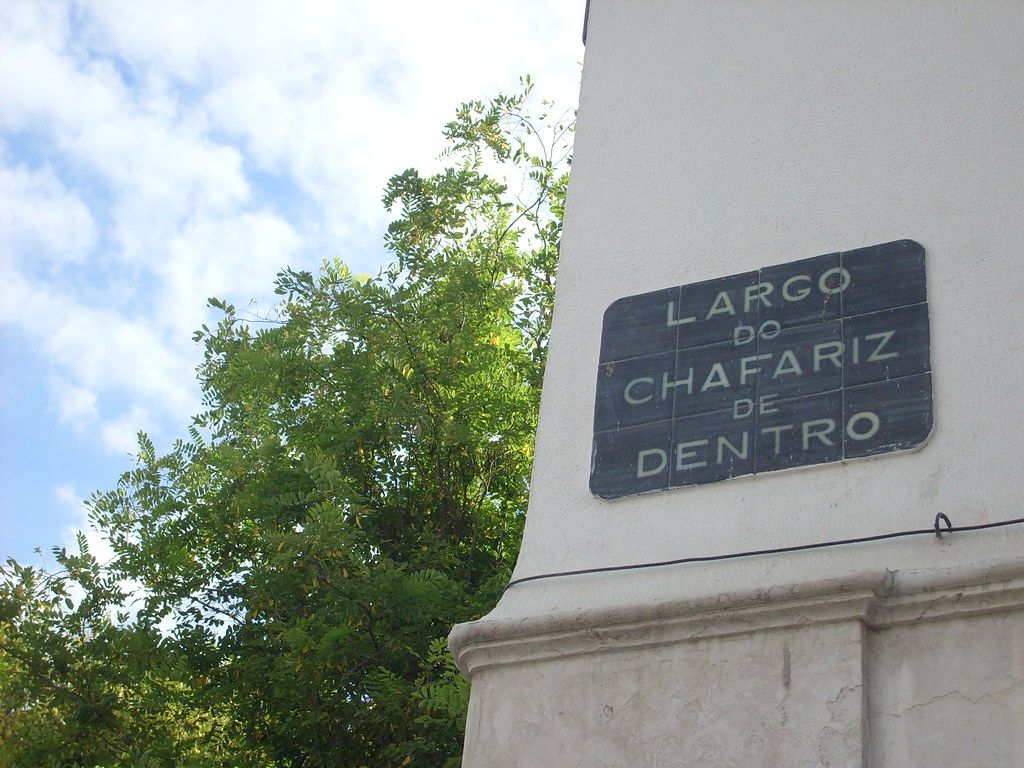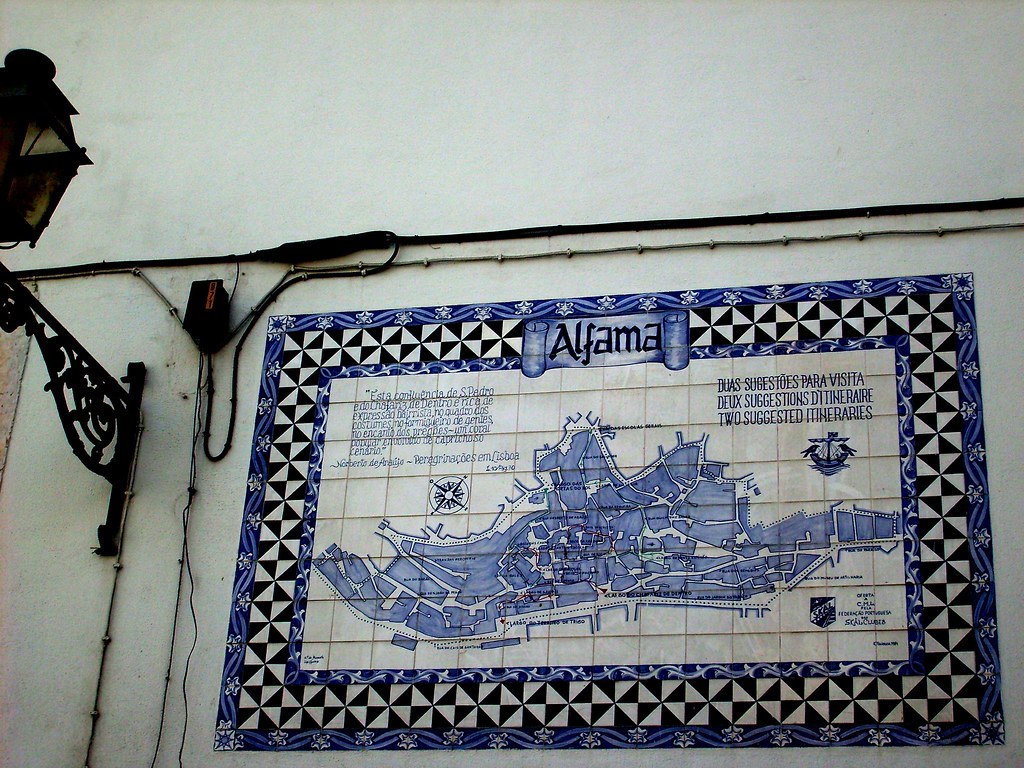
Panel suggesting two itineraries to visit Alfama
On the Largo do Chafariz de Dentro is located the unobtrusive fountain of the same name. It was called Chafariz de Dentro (inner fountain) as it was unusually positioned, i.e. within the old city walls. Originating from the 14th C., it once also bore the name "Horses' Fountain", as the gargoyles portrayed two bronze horses heads. These were stolen in 1373 by Spanish troops. The fountain was built in its current form in 1622.[*]
Already we knew there was a section of the cerca Fernandina in the Largo do Chafariz de Dentro, but never imagined they were there of the importance of the buried objects that have recently been found by archaeologists of the Department of Archeology Museum of the City with the support of the Office of Project of Alfama. The wall, built between 1373 and 1375, is scrapped in 1765 for the construction of the building of Customs. During the nearly four centuries, the inhabitants of Alfama were leaving many traces that are recovered and now studied by archaeologists. In several layers of soil analyzed, there were remnants of food and objects that can make a more accurate picture of Lisbon, then, especially the second half of the sixteenth century, when the city was the capital of an empire on a global scale. These findings relate to everyday life, especially the dietary habits and practices and practices of day-to-day. Side by side are a mark of Alfama of fishermen and seafarers, but also from a noble Alfama. One example is the large number of Ming porcelain from China, the Italian ceramics or even a tooth of marfim. It is not common to find such objects in archaeological excavations in Lisbon. Moreover, the Largo do Chafariz de Dentro is especially rich in discoveries. According to officials of the Department of Archeology Museum of the City in two and a half years found that more material off than in all other works made in Alfama. The work of archaeologists does not end here. This is followed by a lengthy treatment of materials, which should lead to further scientific studies and work to disseminate among the population at large. Given the quality of some objects it is expected to integrate the permanent exhibition of the Museum of the City.[*]
(Sorry, but I didn't shoot the fountain! LOL)
(Sorry, but I didn't shoot the fountain! LOL)







7 comments:
You still have a camera? LOL
Great photos, as usual, and wonderful history! Thanks for being so diligent in bringing Alfama to life for us.
I love your new header and the information about the fascinating archaeological work being done. You love your hometown and it shows. I also think that the tile mosaic is beautifully executed.
Living in a big city like Lisbon is such a gift.
Nice fountain---heehee!
I really like the blue tiles. Great. Thanks for the info too. MB
Nice photography of the fountain.
hello Mary Jo !
Your text makes me smiling...
But You are two very nice photos...
Pretty blog here.
I'll come again to read the others posts...
Love the history and the very pretty images.
One of my favourite things about Lisbon was the blue tiles - how fantastic that you've even got little maps in blue tiles! That's so classy! :)
Post a Comment